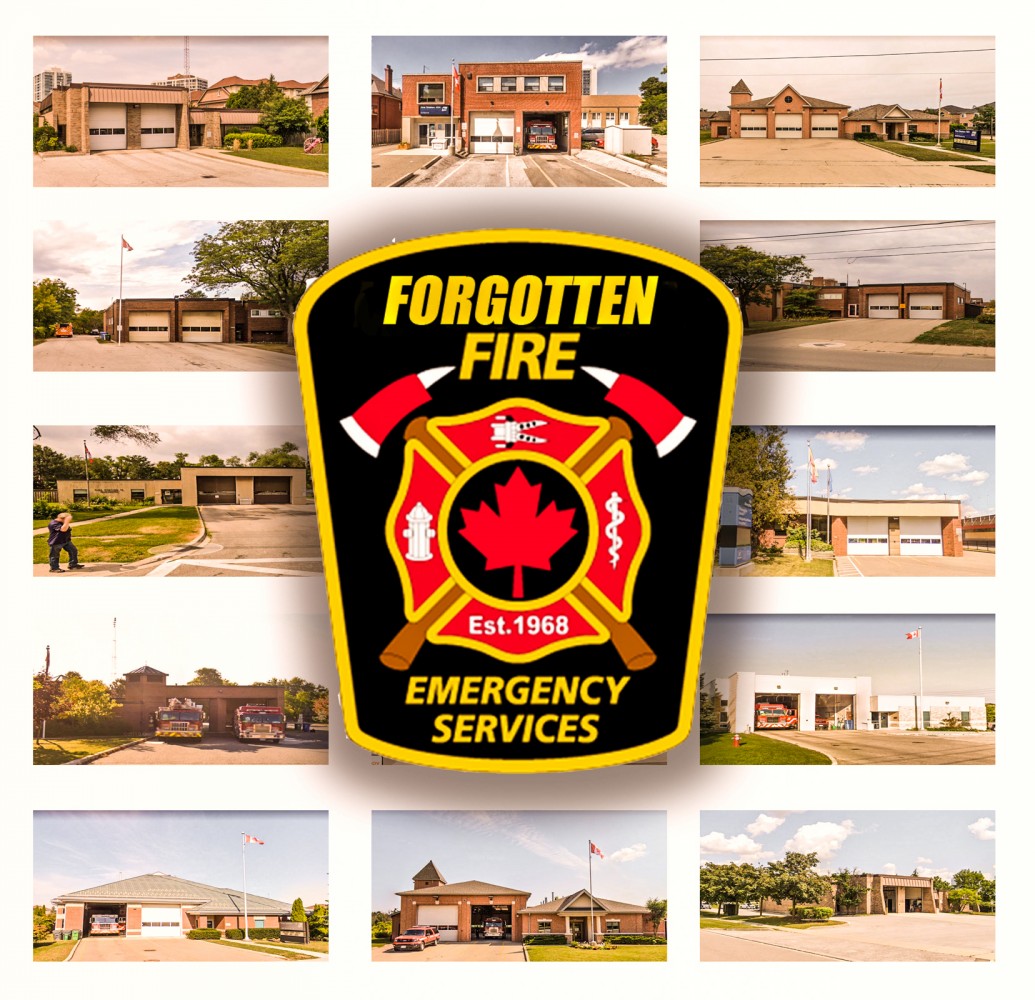
Part 1 – Documents show decades of neglect have left Mississauga’s fire stations crumbling & public safety at risk
Years of neglect are coming back to haunt the City of Mississauga. The repair bill for its aging fire infrastructure is becoming unmanageable, according to an internal audit of 14 fire stations in the city in 2019, which staff will not release publicly.
After they refused to share it, The Pointer filed a Freedom of Information request to obtain the document. Its findings are alarming.
It reveals a near-universal state of disrepair and high costs needed to get critical buildings to meet even the basic standards for safety, after decades of financial neglect by City officials and its elected council members.
A trio of stations are in such a bad state, the audit doesn’t even recommend repairs, saying they simply can’t be brought up to standard.
The findings of the disturbing report are even more jarring considering how badly under-served the city already is.
Ideally, for a city its size, and to meet national safety standards for fire-response times, Mississauga should have about 44 stations. It currently has 21.
View Forgotten Fire Mississauga in a full screen map
In 2019, the City of Mississauga completed a thorough investigation of its oldest fire stations, some of which predate the incorporation of the City itself, in 1974.
The disturbing neglect underscores the City’s atrocious response times to fire-related calls. The national standard is 240 seconds 90 percent of the time. In 2018, Mississauga Fire’s average response time was 536 seconds (8 minutes and 56 seconds) more than twice the standard established to keep residents safe. The extra five minutes can mean the difference between life and death.
There is a clear correlation between those fire stations in desperate need of improvements and those with below-standard response times, meaning the City’s irresponsible budgeting and lack of investment into its fire service is now impacting community safety.
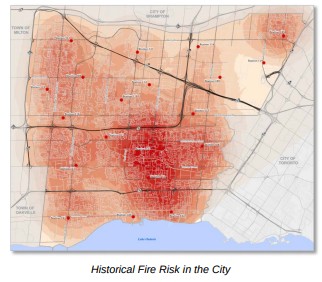
Even in high risk areas for fire, Mississauga Fire Services struggles to meet standardized response times from the National Fire Protection Agency.
The audit describes buildings, built between 1955 and 2003, some falling apart and others woefully below standard. Issues range from inaccessible stations to potentially unstable foundations. The repairs suggested in the report are required for every station “to adequately meet its functional and accessibility requirements.”
The recommended fixes are the bare minimum.
In total, the bill would come to $31.4 million, with some stations requiring almost $4 million in repairs. The City of Mississauga has known about its decrepit emergency response buildings since at least May 2019, when the report was completed, but is still creating an infrastructure plan to address the dire situation.
Since the report was made available internally, councillors have rarely discussed the state of the fire service and the 2020 budget process included few details about the looming crisis. The poor condition and alarming lack of funding for the City’s emergency response infrastructure — needed for fires, traffic accidents and other health calls — has been ignored over multiple council terms.
“This is nothing less than two or three decades of absolute neglect by the City to properly maintain these fire stations to any sort of standards. These are City buildings, you wouldn’t allow the public to operate their buildings the way we’re operating our fire stations,” Chris Varcoe, fire union president, told The Pointer in a July interview about the audit. The City did not proactively share the audit’s contents with Varcoe, who was forced to view its details through The Pointer. A spokesperson said it had shown the document to the Association “when formally requested,” but would not confirm when this was done.
Responding briefly to The Pointer’s questions at a Mississauga press conference after the City declined a full interview, Fire Chief Tim Beckett downplayed the need for immediate attention, despite the obvious public safety risks.

Mississauga Fire Chief Tim Beckett
“The big piece right now for us is to take that audit, develop the plan with our finance people and a long-term strategy. I can assure that the health and safety issues are addressed, we’re not in any situation where the stations are falling down or unsafe,” Beckett said. “We just need to make sure we have a long-term plan to ensure the sustainability of these stations.”
His claims do not square with what the frontline firefighters on the ground are experiencing.
“I don’t know the logic that went into previous administrations, but they ran for a long time on the mantra of ‘do more with less’. I think that’s been disproven pretty substantially, all you can do with less is less,” Varcoe said. “The whole idea ... has proven to be an abject failure and we’re seeing that now because the bill is coming in and it's stunningly expensive to repair decades worth of neglect.”
The repair bills for Fire Station 108 and 110 are particularly high at $3.8 and 3.9 million, respectively. Fire Station 108 was built in Streetsville in 1980, while 110 was constructed on Hurontario Street just north of Queensway in 1982.
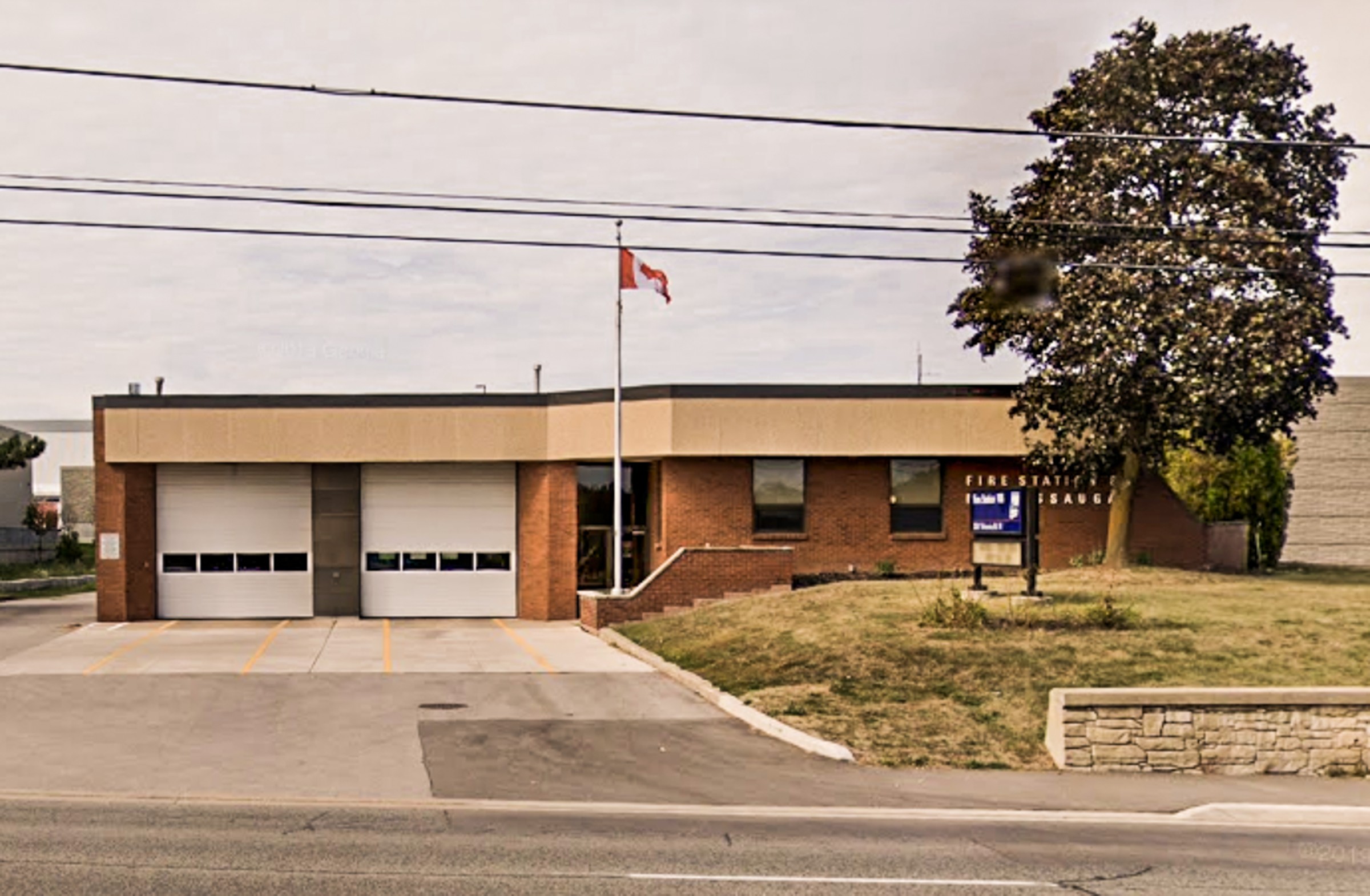
Fire Station 108
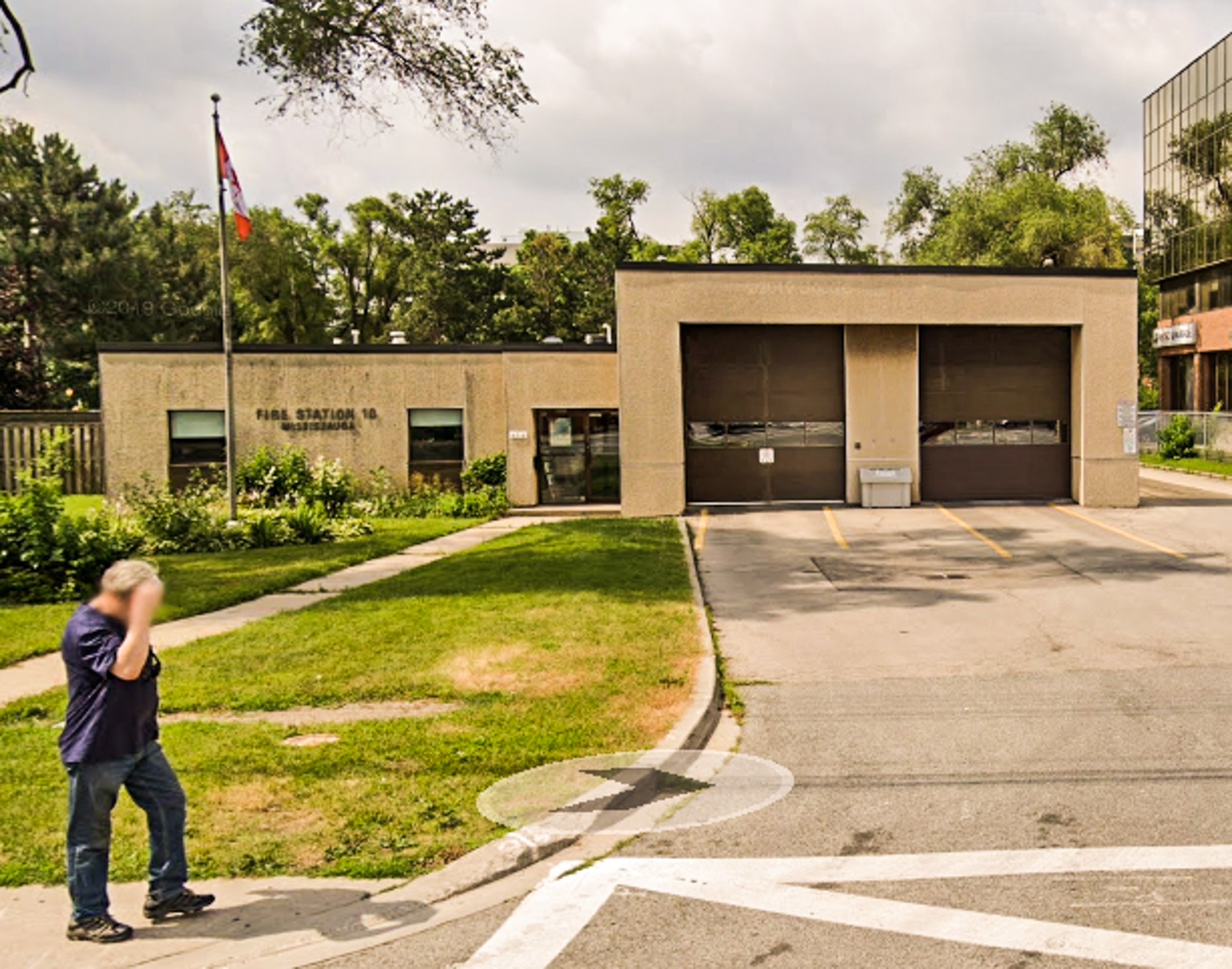
Fire Station 110
A lack of space, roofs in bad need of replacement and a lack of winter-protection are just some of the issues highlighted in the audit.
The renovation costs for 108 relate to its lack of room for senior staff. According to the audit, the station operates with a district chief, but currently needs additional rooms for a district chief and captain to be built.
Fire Station 110 has even more pressing needs. The audit gave the building condition a “poor” classification with a list of immediate issues. Gaps at the edges of “large amounts” of its windows mean cold penetrates in the winter, while the building’s roof is beyond its useful lifecycle and “may have leaking issues”. The audit recommends the roof in particular be “replaced in the immediate future.”
Buildings on the list are not physically in danger of collapsing, Beckett is quick to point out. But firefighters live and operate from these spaces. Freezing winter temperatures penetrating into dorms, the potential for leaking roofs or, at the height of a pandemic, cramped conditions, are all issues that represent poor working conditions for firefighters who need to respond in a second’s notice during an emergency.
In Clarkson, at Fire Station 103, the audit observed “step cracking throughout the concrete block walls”, something which “may suggest building movement.” This suggests its foundations are in danger of shifting.
The problems are varied and numerous, individually they may not seem urgent, but the full list equates to buildings dramatically below the minimum standards for workers who risk their lives to protect residents.
Some of the issues relate to the material condition of the buildings, others highlight the lack of back-up power sources, accessibility problems and a lack of washroom space for female firefighters, who started to join the force 25-years ago. “Our buildings are certainly a lot friendlier to male firefighters than they are to female firefighters and the City has absolutely failed… to help address that issue,” Varcoe said.
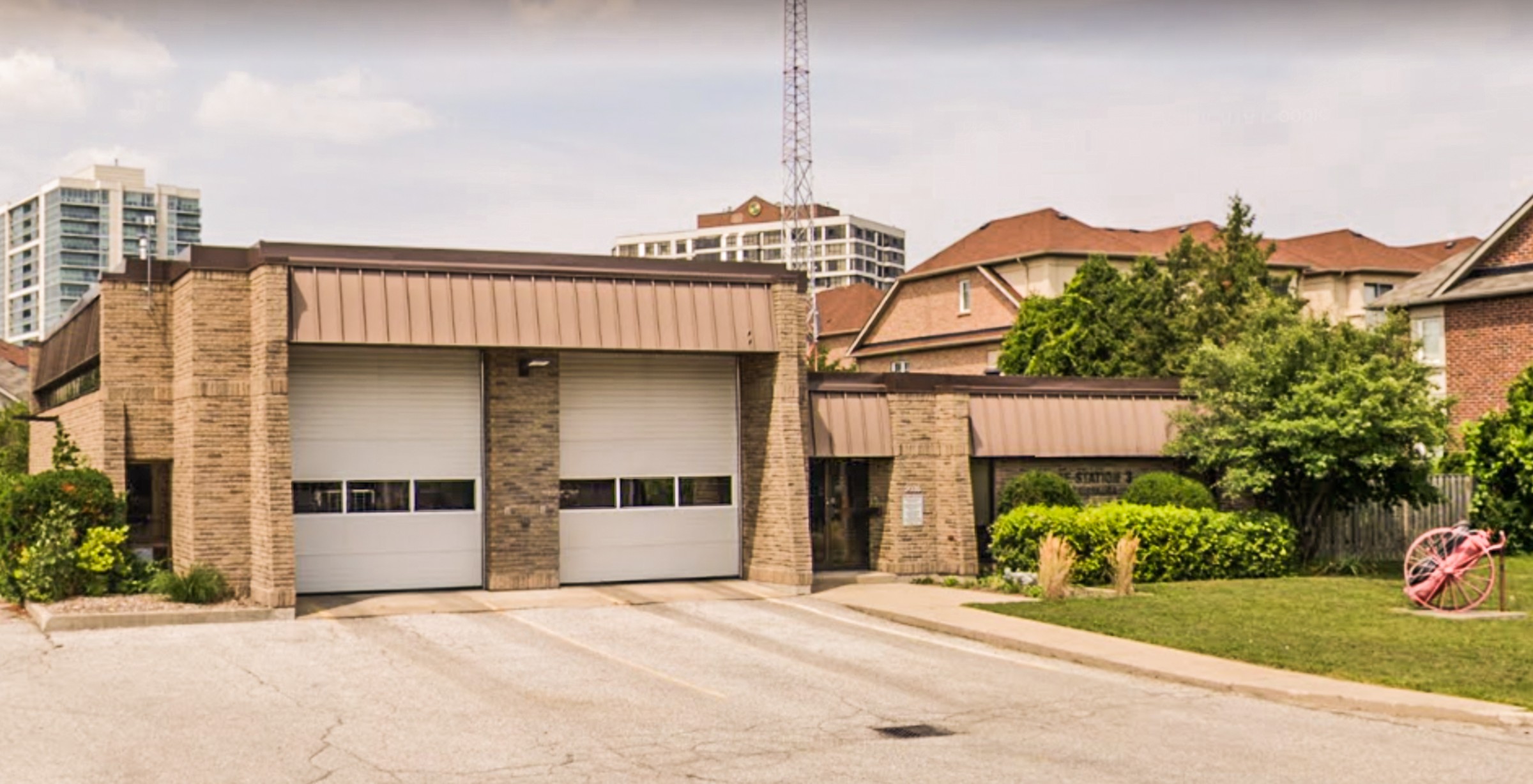
Fire Station 103
The repair bill for the 14 fire stations audited, averaging $2.2 million per building, is a sticker-shock for the City, which is facing an already unmanageable infrastructure deficit.
The audit identified three fire stations as too badly worn down for even major renovations, meaning they would need to be torn down and rebuilt in order to meet standards, while the remaining 11 stations require varying levels of repair.
“[It is] the bare minimum, the absolute bare minimum, getting buildings to adequate,” Varcoe added. “The urgency is absolutely apparent and in front of us now. It’s actually shameful that we’re dealing with this in a city the size of Mississauga that the current mayor and fire chief are left clearing up two-plus decades of neglect and underfunding… It is extremely urgent.”
The upgrades listed won’t take the buildings into the future; the repairs will only bring them up to a basic standard. “We’re not even asking for the bells and whistles, we’re asking for our buildings to be a safe work environment for our members to work in, nothing more and nothing less than anyone else in the city enjoys in other buildings,” Varcoe said.

Chris Varcoe, president of Mississauga's firefighters' union
The neglected stations are another symptom of Mississauga’s forgotten emergency service. As The Pointer has previously reported, it went years without new investment and, as Mississauga has rapidly grown, standards have slipped to dangerous levels.
The City’s fire service has response times significantly below the industry standard set by the National Fire Protection Agency (NFPA) for reaching an emergency 240 seconds after the initial 911 call, 90 percent of the time. In fact, its response times are so far below where they should be, Mississauga lowered its target to 240 seconds 75 percent of the time instead of 90 percent. Still, the City’s under-resourced firefighters are failing to even come close to the lowered target.
Firefighters, dispatched from stations in increasingly desperate states of repair, are averaging more than twice the target response time. The city’s growing population, congestion and taller buildings are compounding the problem as the fire service struggles to keep up.
The issue is one that should be well known to council. During the summer of 2019, the City approved its Fire Master Plan aimed at addressing some of the City’s shortcomings. It resolved to build six fire stations over the following 12 years in strategic locations to push response times down, while investing in education to reduce the number of callouts.
Early documents for the 2021 budget suggest a levy to pay for this work will be removed from the upcoming budget and resumed in 2022 instead.
The Pointer approached all Mississauga councillors to ask what they were planning to do for the neglected fire service. Only Carolyn Parrish and Ron Starr responded.
Parrish, the Ward 5 Councillor, chose not to comment on the audit itself, instead citing various investments council has made in the fire service. “I recall a massive back pay adjustment to our firefighters in February 2018 of $11.7 million to bring them to the level of other comparable departments. Council spends money where it is needed,” she said, adding praise for the work of the City’s frontline firefighters after an unfortunate fire in her ward. “I have a great deal of respect for our firefighters. The quick response of Malton station saved both the Castles Playground several years ago and Victory Hall this week.”
A large portion of the playground structure she refers to was already badly burned by the time firefighters were able to put out the blaze. It caused an estimated $70,000 in damages to the wood structure.
Parrish’s reference to the salary settlement does not address the failure to properly fund firefighting infrastructure. It raises a key disparity in funding. While response times have fallen and buildings have been ignored, labour costs have increased steadily.
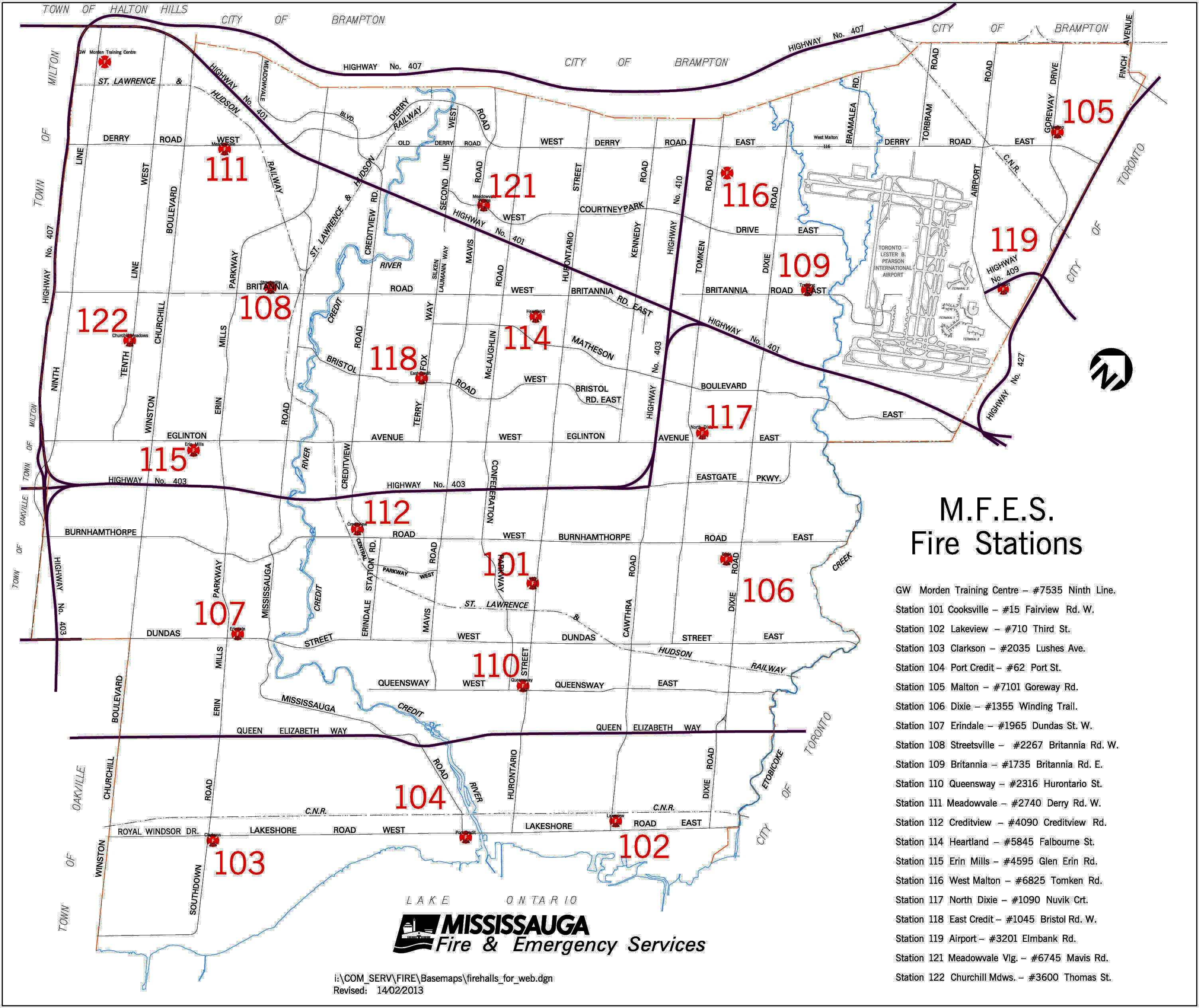
A map showing the location of all Mississauga fire halls
The 2018 settlement brought pay for firefighters in Mississauga in line with Brampton, Toronto, Oakville and other benchmarked departments. It took the form of a retroactive pay increase of 7.3 percent over three years between 2015 and 2017.
"Our front-line emergency professionals are some of the best and the bravest and we must ensure they are well-paid," Crombie said at the time. She did not comment on the state of infrastructure.
Over the past decade, councillors have not dealt with an unsustainable rise in salaries for staff (and themselves) as labour costs have far outpaced the rate of inflation in the province.
The 2020 budget included labour costs of approximately $555 million across the corporation, by far the largest cost category. In 2019, there were 1,380 City of Mississauga employees on the Province’s Sunshine List (which includes all public sector employees in Ontario making $100,000 or more) and 28 percent of them were firefighters (this excludes various levels of fire-service management). In Brampton, roughly 19 percent of its 2019 Sunshine List entries are for firefighters.
According to OntarioSunshineList.com, a website that analyzes public disclosure salaries, four of the top 10 most common positions earning more than $100,000 per year in Mississauga relate to the fire service. For 2019, a total of 394 people are listed as “firefighter” with an average salary of $122,494, while 131 are “captain, fire suppression” on an average salary of $145,467. There are 18 positions under “fire inspector” averaging $121,618 per year and 14 entries under “district chief, fire” earning an average of $166,982.
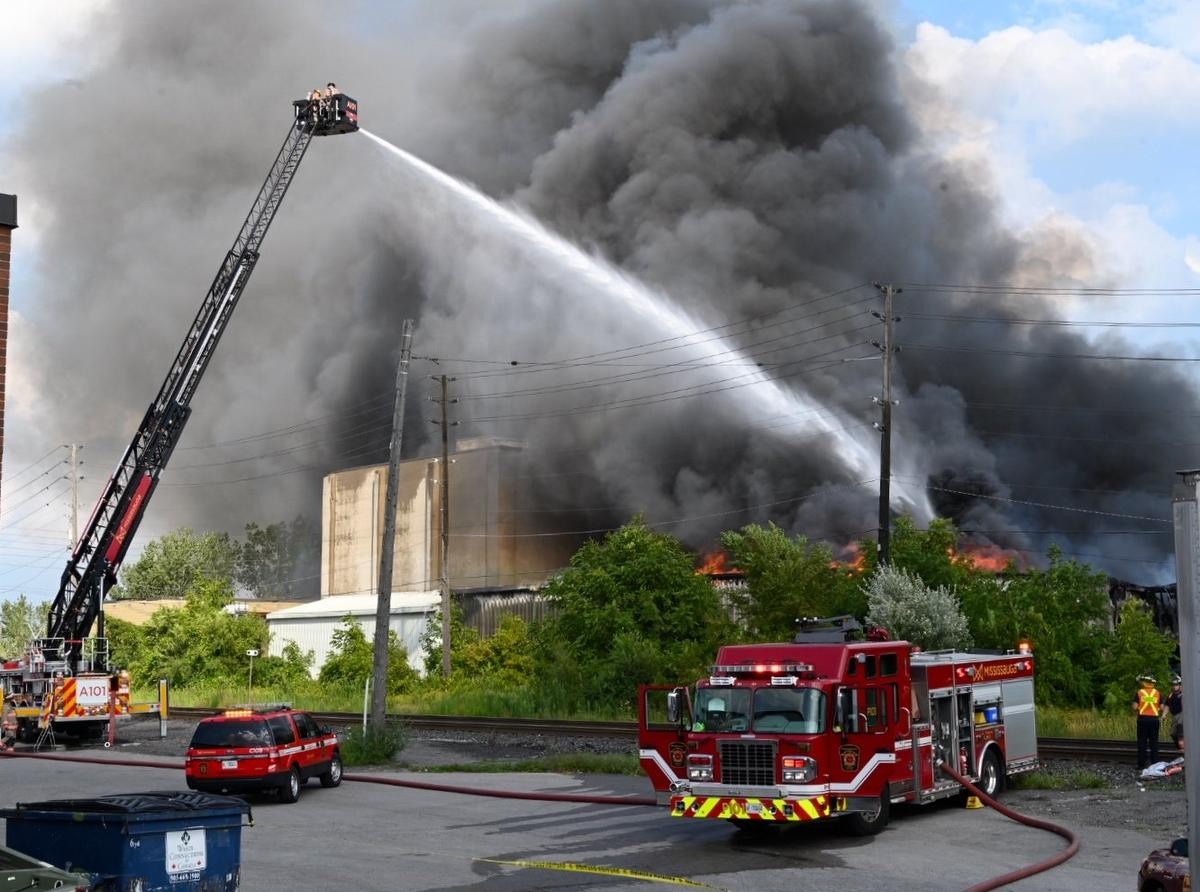
As frontline workers, putting their lives in danger, few would question firefighters being well compensated for their work. A large bureaucracy of support staff and heavy leadership structure may be draining the coffers. It is down to elected councillors to keep a watchful eye over the budget and ensure firefighters are fairly compensated while also working from well-maintained buildings. The dire lack of stations and alarming response times make it clear that funding has been focused on the compensation for staff in the existing department, and not on the future needs of the fire-response infrastructure itself.
In January, Varcoe told The Pointer he felt the deal the union negotiated was “fair and reasonable” for both his members and taxpayers. He separated the issue of infrastructure, saying neglect from previous councils shouldn’t mean firefighters risking their lives should be paid less.
In 2018, one “communications officer, fire” (who handles emergency calls and dispatch) earned $170,716. According to the Sunshine List, that was the 41st highest salary paid by the City to any municipal employee since 1996. A separate “communications coordinator, fire” ranked 70th since ‘96, earning $153,779 in 2018. Another “communication officer, fire” also earned $153,361 in 2015.
All three recorded spikes of between $20,000 and $40,000 in those particularly high years compared to the following year, which may have related to bonuses or benefit payouts.
A look at Ontario's Sunshine List and a small sample of fire employees in Mississauga.
“We can’t afford to have facilities that aren’t performing properly. It’s a dilemma,” Ward 6 Councillor Ron Starr told The Pointer, referencing the claustrophobic financial conditions brought on by COVID-19.
The remaining nine members of council did not respond to multiple requests for comment. An assistant for Ward 9 Councillor Pat Saito said the City would be replying to questions on council’s behalf, suggesting most elected officials would be relying on apolitical bureaucrats to field the tough questions about decisions that elected officials are expected to make on behalf of constituents.
Responses from the City are important as they illustrate the practical solutions being proposed inside City Hall, but the individual voices of councillors are ultimately the only ones heard at decision time. Political decisions on funding are made by Mississauga Council, not City staff.
The silence of the vast majority of elected members is a hollow reminder of the years of neglect that have left fire stations across Mississauga in a sad state.
Varcoe said councillors have been oblivious to the fire service for years.
“We’ve been quiet for too long, maybe some of the blame goes to us for not speaking out and bringing our concerns forward in the manner that we should have been… We do have a plan to go to the public with the state of our fire service in short order if there’s not some immediate amendments from council to address the concerns,” he said.
“Fire trucks are going out of service every day due to staffing issues. Do the citizens of Mississauga really know who’s there for them as we’re rotating truck shutdowns? Do the councillors even know? Do the councillors even know that maybe they have three fire trucks in their ward on a typical day and maybe that day, two of those trucks are shut down? Their residents are only going to have one third of the fire trucks available that are typically there.”
A spokesperson for the City of Mississauga said the fire service’s repairs would be dealt with in a Fire Renewal Review, a document that will “put together a long term strategy” for buildings. The disruption caused at City Hall by COVID-19 means there is no timeline for the completion of the document and subsequent funding decisions. It seems the 2021 budget will therefore include little to remedy the situation facing the city’s crumbling fire stations.
“Any immediate health and safety issues would be dealt with to ensure the safety of our staff,” the City added.
Email: [email protected]
Twitter: @isaaccallan
Tel: 647 561-4879
COVID-19 is impacting all Canadians. At a time when vital public information is needed by everyone, The Pointer has taken down our paywall on all stories relating to the pandemic and those of public interest to ensure every resident of Brampton and Mississauga has access to the facts. For those who are able, we encourage you to consider a subscription. This will help us report on important public interest issues the community needs to know about now more than ever. You can register for a 30-day free trial HERE. Thereafter, The Pointer will charge $10 a month and you can cancel any time right on the website. Thank you.
Submit a correction about this story


